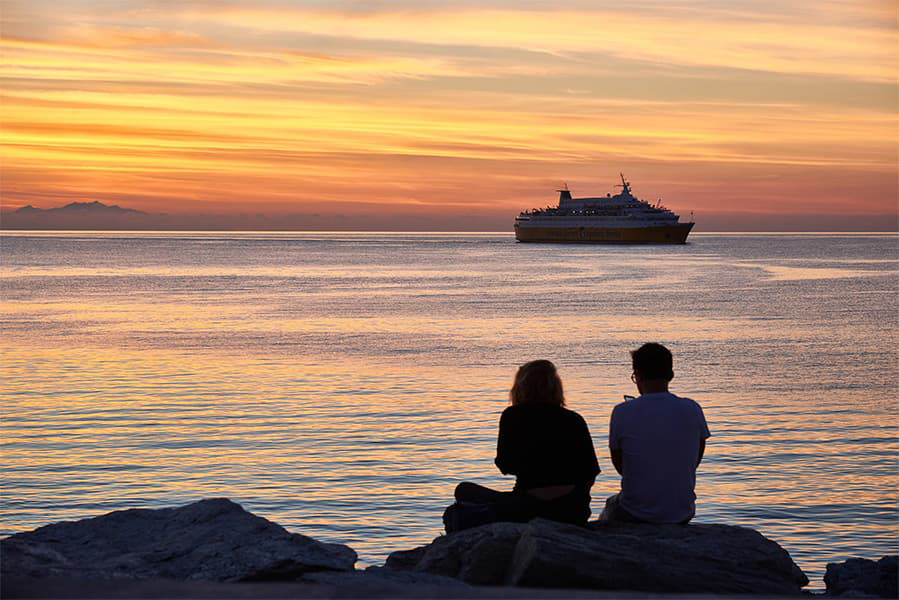Bonifacio - Palau
Ferry to Sardinia
Bonifacio - Palau
Ferry to Sardinia

At Direct Ferries you can compare Corsica to Sardinia ferries on the Bonifacio Palau ferry route with our quick and easy live availability and best price search.
Using our Fare Search you can check real time prices, availability and book ferries from Bonifacio to Palau or alternatively compare this route or the ports with other options.
Getting a quote or booking a ferry to Sardinia couldn't be easier. All you need to do is select Bonifacio to Palau from the menus to the left, select the number of passengers and hit search!
More routes than anyone else.

Compare fares, times & routes in one place.
Change plans easily with flexi tickets.

Book e-tickets & manage trips in-app.
Live ship tracking & real-time updates.

Top-rated customer support when you need it.
Bonifacio, one of the busiest Corsican destinations, is a fantastic place with numerous restaurants and hotels. The beautiful old city is not to be missed and around Bonifacio you'll find the best hidden beaches and caves in Corsica. From Bonifacio, you can see the Sardinian coast situated only 10 miles away. There are many daily departures between Bonifacio and Sardinia and the crossing itself allows you to take in the stunning views of the port and the Old City.
Palau is a large tourist town on the northern-most tip of the Sardinian coast and stands in front of the archipelago of La Maddalena. The tourist marina lies to the south of the berthing area reserved for the ferries to Palau and during the summer months it is full of boats of all shapes and sizes. The town has grown considerably in recent years, with complexes of villas and apartment blocks springing up along the coast. Today, the town is an autonomous municipality and has earned itself extraordinary success in the panorama of international tourism. Palau, with its coastline artistically moulded by nature, is one of the places most adapt for carrying out sailing and windsurfing activities. Towards the end of the last century, the area began to be populated by fishermen and farmers.